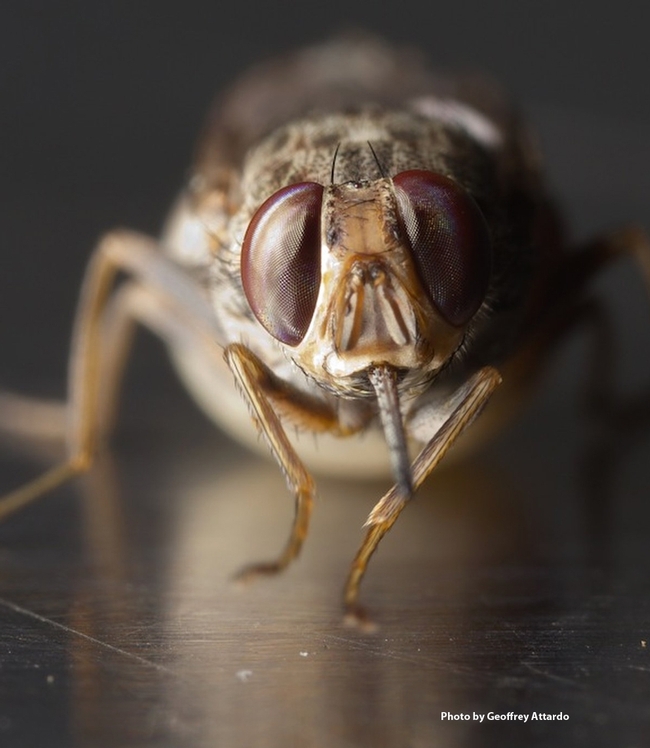- Author: Kathy Keatley Garvey

UC Davis medical entomologist-geneticist Geoffrey Attardo, a global authority on tsetse flies, serves as the principal investigator of a research project at the Lawrence Berkeley National Laboratory (Berkeley Lab) that involves scanning the entire reproductive cycle of the fly.
Attardo and other members of the research team are exploring the intact organs and tissues of tsetse flies using a powerful 3D X-ray imaging technique. The study, “Unraveling Intersexual Interactions in Tsetse”), is funded by the National Institute of Allergy and Infectious Diseases (NAIAD) of the National Institutes of Health.
“We started this project in 2019 and the work is ongoing,” said Attardo, an assistant professor in the UC Davis Department of Entomology and Nematology and chair of the Designated Emphasis in the Biology of Vector Borne Diseases. “We actually have scans of flies through the entire reproductive cycle, however, the segmentation is ongoing. We are working on developing ways to train artificial intelligence based software to assist us with the tissue segmentations.”
The tsetse fly transmits the parasite that causes the deadly human and animal trypanosomiasis, better known as African sleeping sickness, says Attardo, who is featured in a recently posted article, "A Detailed Look Inside Tsetse Flies," on the Berkeley Lab website. (See YouTube)
“This specialized reproductive biology has required dramatic modifications to the morphology of the reproductive organs in these and related flies,” according to the Berkeley Lab News Center. “Here, we use phase contrast micro-Computed Tomography (Micro-CT) to visualize these adaptations in three dimensions for the first time. These adaptations include cuticular modifications allowing increased abdominal volume, expanded abdominal and uterine musculature, reduced egg development capacity, structural features of the male seminal secretions and detailed visualization of the gland responsible for synthesis and secretion of “milk” to feed intrauterine larvae. The ability to examine these tissues within the context of the rest of the organ systems in the fly provides new functional insights into how these changes have facilitated the evolution of the mating and reproductive biology of these flies.”
“The imaging technique provided new insights into how the flies' specialized biology governs mating and reproductive processes, including female flies' unique lactation and their delivery of a single fully developed larvae per birthing cycle – whereas most other insect species lay eggs,” according to the article. “The ALS (National Laboratory Advanced Light Source) produces X-rays and other forms of light for a broad range of simultaneous scientific experiments.”

The parasite invades the central nervous system and disrupts the sleep cycle, he says. “If not treated, the disease can result in progressive mental deterioration, coma, systemic organ failure and death.” An estimated 65 million people in 36 countries in sub-Saharan Africa are at risk for the deadly disease, according to the World Health Organization.
Attardo led a study, published in September 2020 in the journal Insects, detailing the ALS imaging work. The article, “Interpreting Morphological Adaptations Associated with Viviparity in the Tsetse Fly Glossina morsitans (Westwood) by Three-Dimensional Analysis,” received widespread attention. ALS experiments allow the researchers to create a detailed 3D visualizatiaon of the reproductive tissues without dissection and staining processes that introduce damage to the delicate samples.
“We want to understand what changes are happening during this process, how the process is being mediated, and if it can be manipulated to artificially repress females in the wild from mating,” Attardo told the Berkeley Lab News Center.
The Berkeley Lab is a multiprogram science lab in the national laboratory system supported by the U.S. Department of Energy through its Office of Science.
In his UC Davis lab, Attardo researches one of 35 tsetse fly species, Glossina morsitans morsitans, which prefers feeding on cattle to humans. Its strong mouthparts can easily puncture the tough cattle hide. In his lab, he feeds them warm cow blood.
As Attardo says on his website: "Arthropod vectored diseases cause more than 1 billion cases of illness and over 1 million deaths in humans each year. My work centers on understanding the reproductive biology of insect vectors of human disease. The goal of this work is to develop a detailed understanding of the molecular biology and physiology of these insects and to exploit this information to control these insects and the diseases they transmit. I use molecular biology and biochemical techniques in my research to address these questions. I also incorporate new technologies such as high throughput DNA sequencing and metabolomics which expand beyond the capabilities of traditional molecular techniques to understand the biology of these organisms at a systems level."
The UC Davis scientist hopes "to use the knowledge gained from these studies to improve current vector control strategies and to develop new strategies that disrupt the reproduction of these disease vectors."
Attardo holds a doctorate in genetics from Michigan State University, where he researched the molecular biology of mosquito reproduction in the lab of Alexander. Prior to joining the UC Davis faculty in 2017, Attardo worked for 13 years in the Department of Epidemiology of Microbial Diseases at the Yale School of Public Health, first as a postdoctoral associate and then as a research scientist studying the reproductive biology of tsetse flies.


- Author: Kathy Keatley Garvey

Mosquito researcher Maria Onyango, a postdoctoral associate at the New York State Department of Health, Albany, N.Y., will speak on "The Impact of Zika Virus Infection on the Metabolites and Microbiome of Aedes albopictus" from 4:10 to 5 p.m. The Zoom seminar is open to all interested persons; click here for the form to register and obtain the Zoom link.
Aedes albopictus, known as the Asian tiger mosquito, is a close relative of Aedes aegypti, the yellow fever mosquito. Both invasive species are moving through California. (See California report of the two species, and the Center for Disease Control and Prevention's estimate potential range of the two species in the United States.)
Medical entomologist-geneticist Geoffrey Attardo of the UC Davis Department of Entomology and Nematology, who collaborates with Onyango, will host the seminar.
"Dr. Maria Onyango works on the biology underlying interactions between arboviruses (Zika virus), vector mosquitoes and the associated microbiome," Attardo said.
Aedes aegypti Detected in Yolo County
The Sacramento-Yolo Mosquito and Vector Control District recently announced the detection of Aedes aegypti in Yolo County: an adult female found Sept. 15 in a trap near East and Main streets, Winters, and an adult female found in in a trap at Pioneer Park near El Macero, Davis, on Sept. 30.
Aedes aegypti, a day-biting mosquito originating from the forests of Uganda, can transmit the Zika virus, yellow fever, dengue, and chikungunya. However, California has no documented cases of this species transmitting the Zika virus, dengue or chikungunya.
Attardo related that the first detection of Aedes aegypti in California occurred in 2013 and was described in these papers:
- Metzger, M.E.; Hardstone Yoshimizu, M.; Padgett, K.A.; Hu, R.; Kramer, V.L. Detection and Establishment of Aedes aegypti and Aedes albopictus (Diptera: Culicidae) Mosquitoes in California, 2011-2015. J. Med. Entomol. 2017, 54, 533–543, doi:10.1093/jme/tjw237.
- Gloria-Soria, A.; Brown, J.E.; Kramer, V.; Hardstone Yoshimizu, M.; Powell, J.R. Origin of the dengue fever mosquito, Aedes aegypti, in California. PLoS Negl. Trop. Dis. 2014, 8, e3029, doi:10.1371/journal.pntd.0003029.
"Since then it has been determined that there have likely been at least two separate introductions of Aedes into California--possibly three but that requires additional study," Attardo says. "The result of this is that there are two genetically distinct populations of Aedes in California. One is based in Southern California in the Greater Los Angeles area as well as areas to the East, like Riverside and Coachella valleys. The second population is distributed throughout the Central Valley. These two populations are genetically distinct and we have developed a genetic assay to differentiate the two populations. We have been working with local abatement agencies (Winters, Sacramento/Yolo and Shasta counties) to test their collected mosquitoes to determine which population they resemble at the genetic level. Each year has shown Aedes aegypti spreading farther into parts of California where it has never been seen before."
- Pless, E.; Gloria-Soria, A.; Evans, B.R.; Kramer, V.; Bolling, B.G.; Tabachnick, W.J.; Powell, J.R. Multiple introductions of the dengue vector, Aedes aegypti, into California. PLoS Negl. Trop. Dis. 2017, 11, e0005718, doi:10.1371/journal.pntd.0005718.
- Lee, Y.; Schmidt, H.; Collier, T.C.; Conner, W.R.; Hanemaaijer, M.J.; Slatkin, M.; Marshall, J.M.; Chiu, J.C.; Smartt, C.T.; Lanzaro, G.C.; et al. Genome-wide divergence among invasive populations of Aedes aegypti in California. BMC Genomics 2019, 20, 204, doi:10.1186/s12864-019-5586-4.
"We recently ran our genetic test on mosquitoes that we collected from two different sites in Citrus Heights (divided by Route 80) and actually found that the two groups appear to represent both the Greater Los Angeles and the Central Valley populations, with each group specific to one side or the other of Route 80," Attardo said. "This is unpublished data and we are continuing to process additional samples of collected Aedes to reinforce these findings and understand the dynamics of how these mosquitoes are spreading."

The data suggests "that both populations are moving throughout California and are possibly being facilitated by human activities," Attardo said. "Aedes aegypti which was originally a mosquito that developed in tree holes has evolved to be a very human centric mosquito that has learned to thrive in man-made breeding sites. This may be the key to their success and their ability to move so quickly throughout the state."
Attardo emphasized that "these mosquitoes do not naturally carry these viruses and must acquire them by blood feeding on an infected person, successfully developing an infection and then biting another person. So far there have been no outbreaks of these diseases, but now that Aedes aegypti is here, the potential for an outbreak of dengue, Zika, chikungunya or yellow fever is a possibility. Infected people coming from countries where these viruses are endemic could serve to seed the viruses into Californian populations of Aedes which would obviously be a bad thing. The ongoing environmental changes resulting from climate change will likely allow these mosquitoes and others to move into previously uninhabitable areas and it is going to significantly change how we assess risk and management of mosquito-borne disease risks in the United States and around the world. California is just one example of this issue."
Aedes albopictus in California
Along with seven other scientists, Attardo and Onyango co-authored a research article in the Oct. 2nd edition of Frontiers in Microbiology on "Zika Virus Infection Results in Biochemical Changes Associated With RNA Editing, Inflammatory and Antiviral Responses in Aedes albopictus."
Aedes albopictus, also a day-biting mosquito, can transmit Zika and other infectious diseases. "The Zika virus infected more than 1 million people during an epidemic that began in 2015 in Brazil," according to this report, Invasive Mosquito Species Plunge Deeper Into California. The virus also can spread during sex.
Onyango holds two degrees from the University of Nairobi, Kenya: a bachelor of science degree in biochemistry and zoology and a master's degree in applied parasitology. She received her doctorate in veterinary entomology from Deakin University and Australian Animal Health Laboratory, Commonwealth Scientific and Industrial Research Organisation (CSIRO), and then completed postdoctoral training at the Yale School of Public Health, Department of Epidemiology of Microbial Diseases.
Cooperative Extension specialist and assistant professor Ian Grettenberger coordinates the fall seminars. For any technical issues regarding the seminar, contact Grettenberger at imgrettenberger@ucdavis.edu

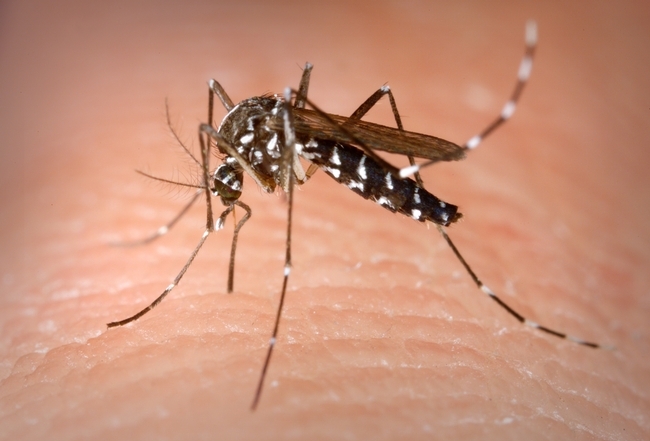
- Author: Kathy Keatley Garvey
The UC Davis Department of Entomology and Nematology's seminar on Wednesday, Feb. 26 will feature six “Faculty Flash Talks” on topics ranging from honey bees to tsetse flies to digger bees to trapdoor spiders to fruit flies.
The seminar, set from 4:10 to 5 p.m. in 122 Briggs Hall, will include Joanna Chiu, Jason Bond, Geoffrey Attardo, Rachel Vannette, Julia Fine, and Arathi Seshadri.
Associate professor Joanna Chiu, vice chair of the department, will present “results from a project in which we study the mechanisms by which insects sense environmental changes (temperature and photoperiod) to regulate their seasonal physiology. Our lab has identified a protein that can track seasonal changes in temperature and photoperiod to promote winter physiology. Without this protein, insects don't know winter is coming!”
Her laboratory research interests include molecular genetics of animal behavior, Circadian rhythm biology, and posttranslational regulation of proteins.
Capsule information:
Jason Bond, Schlinger Chair in Insect Systematics, is a global expert on spiders. His research interests include systematics, taxonomy, and evolution of terrestrial arthropods with an emphasis on arachnids and myriapods. "We employ molecular, morphological, and ecological approaches to study questions related to evolutionary diversification at multiple hierarchical levels (populations – higher taxa)," he says. (See recent grant.)
Geoffrey Attardo, a medical entomologist/geneticist, focuses his research on insect disease vectors, insect reproduction, vector/parasite interactions, reproductive physiology, male seminal secretions, symbiosis, lactation, nutrition, lipid metabolism, transcriptional regulation, comparative genomics, transcriptomics, proteomics and metabolomics. His research on tsetse flies was recently featured on KQED's Deep Look (see news story on Deep Look). (See news story on landmark research.)
Rachel Vannette, community ecologist and assistant professor who coordinates the department's seminars, says: "All plants are colonized by microorganisms that influence plant traits and interactions with other species, including insects that consume or pollinate plants. I am interested in the basic and applied aspects of microbial contributions to the interaction between plants and insects. I also use these systems to answer basic ecological questions, such as what mechanisms influence plant biodiversity and trait evolution." (See recent research)
Arathi Seshadri and Julia Fine, who recently joined the USDA-ARS lab on Bee Biology Road, UC Davis, aim to improve honey bee survival and beekeeping sustainability in California and nationwide. They collaborate with federal, university, non-governmental and industry partners. (See news story on opening of the facility.)
Seshadri, a pollination biologist with expertise in honey bee behavior and plant reproductive strategies, is working with beekeepers and farmer stakeholders to develop projects aimed at finding solutions to the ongoing pollination challenges. Also trained as an evolutionary biologist, she has applied principles of plant-pollinator mutualism, specifically the impact of phytochemicals in pollen and nectar on honey bee health and colony performance. Her contributions to pollinator conservation include enhancing the sustainability of all pollinators, including native bees on farms and urban areas. She also has expertise in agroecosystem-based approaches and citizen science programs to promote pollinator diversity and abundance.
Fine, an entomologist with expertise in insect toxicology, honey bee physiology, reproduction and development, focuses her research on identifying how stressors impact honey bee behavior, health and fecundity. She uses both established and novel laboratory techniques. Her previous projects involved investigating how agrochemical and viral stressors interact to affect the development and survival of honey bee brood and how nutritional stress affects honey bee queen fecundity. In engaging with beekeepers and growers, Fine is researching how realistic biotic and abiotic stressors affect honey bee reproduction, longevity and pollination services, and she is identifying techniques and strategies to overcome these effects.
The seminar is open to all interested persons. For more information, contact Vannette at rlvannette@ucdavis.edu.
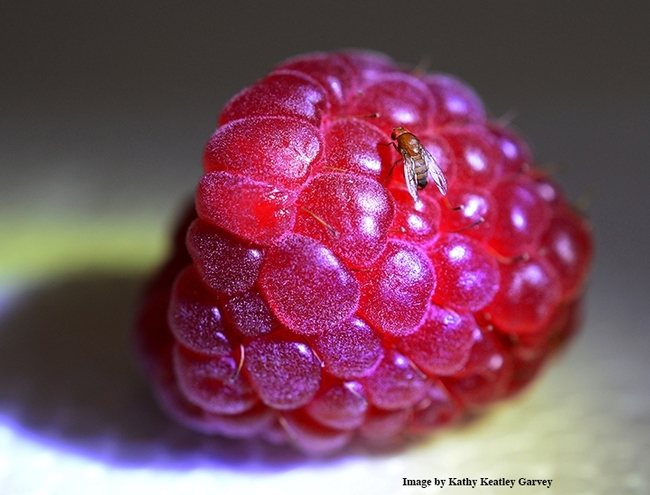
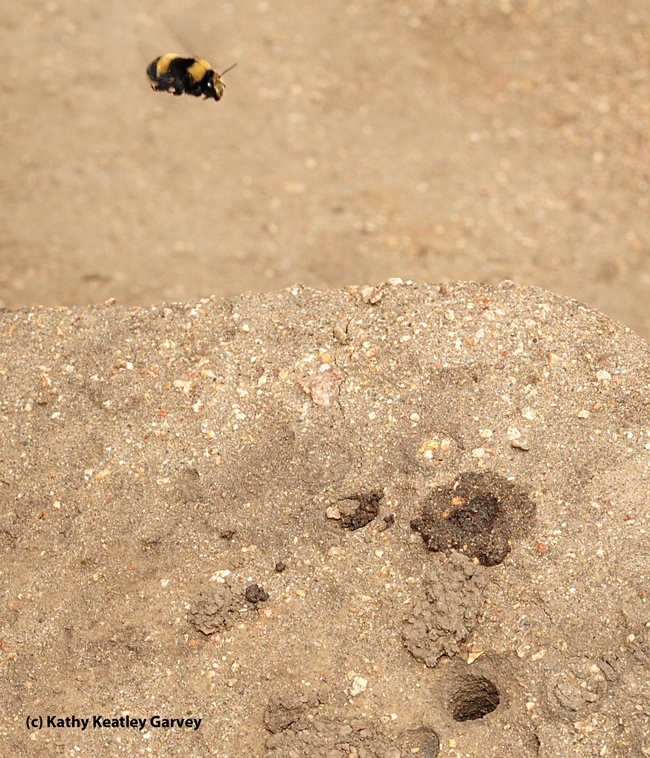
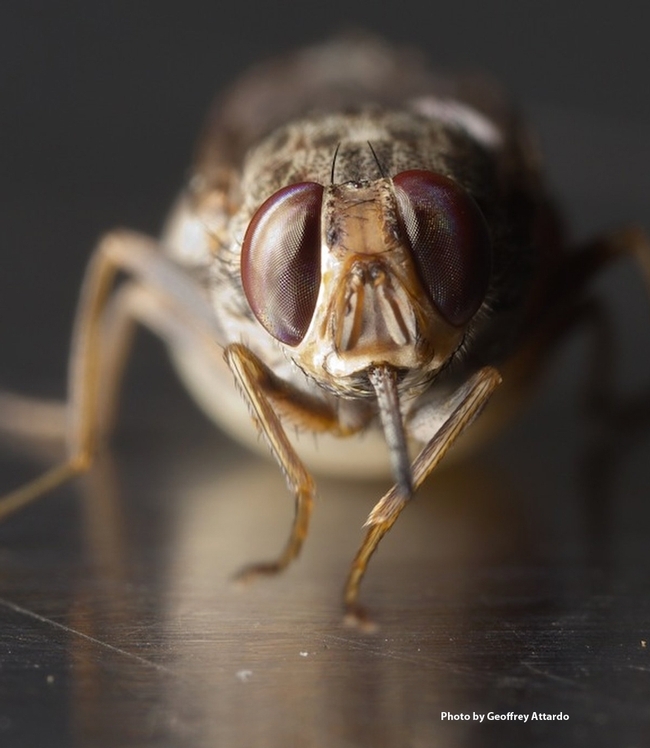
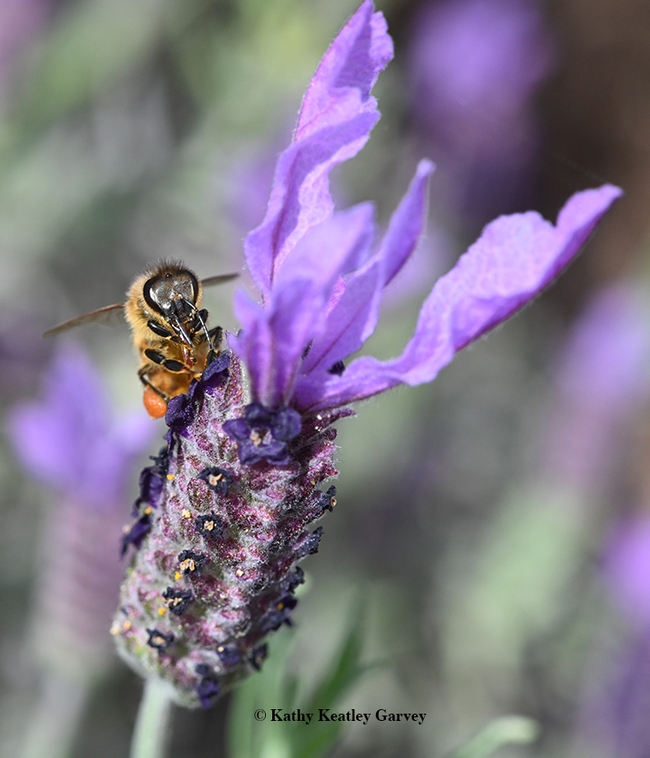
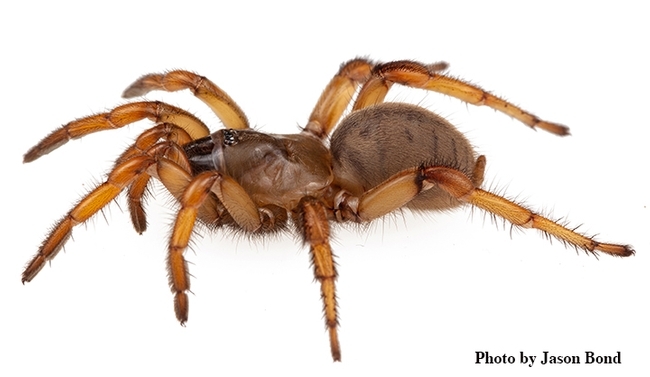
- Author: Kathy Keatley Garvey

In less than 48 hours, nearly 500,000 people have seen them—but not in his restricted-access lab.
His research subjects are blood-sucking tsetse flies, and PBS featured them in its Deep Look video, “A Tsetse Fly Births One Enormous Milk-Fed Baby,” released Jan. 28, and its accompanying news story.
Infected tsetse flies transmit the parasite that causes human and animal trypanosomiasis, better known as sleeping sickness. “The parasite invades the central nervous system and disrupts the sleep cycle,” says Attardo, a global authority on tsetse flies and an assistant professor in the UC Davis Department of Entomology and Nematology. “If not treated, the disease can result in progressive mental deterioration, coma, systemic organ failure and death.”
“PBS sent out a film crew and we spent about two days filming,” he said. The video also includes footage from Africa that PBS purchased, and video of a tsetse trap that Attardo filmed in the Nguruman Escarpment, Kenya, on the border of Tanzania.
Attardo researches one of 35 tsetse fly species, Glossina morsitans morsitans, which prefers feeding on cattle to humans. Its strong mouthparts can easily puncture the tough cattle hide. In his lab, he feeds them warm cow blood.
Tsetse flies, which resemble house flies, are distinguished from other Diptera by unique adaptations, including lactation and the birthing of live young, Attardo says. Just like mammals, tsetse flies, deliver babies and feed them milk. A female produces more than her body weight in milk.
“We mammals like to think we're pretty special, right?” the video begins. “We don't lay eggs. We feed our babies milk. Well, this very pregnant fly is about to prove us wrong. Yep, this tsetse fly is in labor. And that emerging bundle of joy is her larva. While other insects can lay hundreds of eggs, she grows one baby at a time inside her, just like us. Congratulations!”
The accompanying news story, by Gabriela Quirós, explains that Attardo is “trying to understand in detail the unusual way in which these flies reproduce in order to find new ways to combat the disease, which has a crippling effect on a huge swath of Africa.”
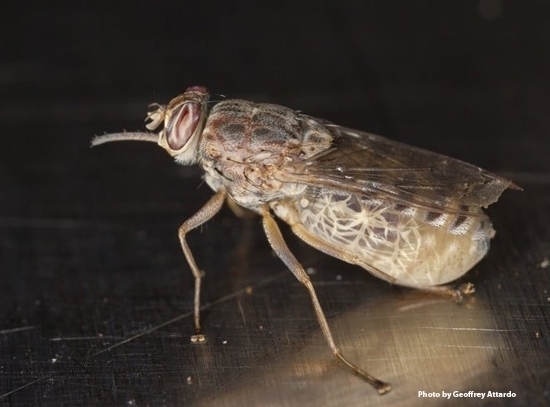
The video shows tsetse flies feeding on cattle, at which point the script reader explains that
“Geoff Attardo…hopes to help. He's trying to stop tsetse flies from making babies in the first place. A female only mates once in her life, enough to make the 10 or so babies she'll have. The male makes sure she doesn't mate again by delivering a substance that makes her lose interest in sex. Scientists are trying to figure out what it is. If they could bottle it and spray it, female tsetse flies may never get busy at all. No more tsetse offspring to worry about.”
Attardo says that tsetse flies deliver only one offspring at a time, as compared to insects that lay hundreds or thousands of eggs at one time. Spraying insects and setting traps can reduce the number who develop the disease, but the insects may become resistant to the chemicals.
Once a female mates, storing the sperm she'll birth in a lifetime, the male delivers “a substance that makes her lose interest in sex,” Quirós wrote. It is that substance or what Attarado calls a “reproductive dead end,” that Attardo wants to replicate, to bottle and spray on the tsetse flies..
“The females definitely are making the decisions,” Attardo told Quirós. “She'll sort of tuck her abdomen underneath her body to prevent him from gaining access, and buzz her wings and knock him off.”
The news story also touched on a bacterium, Wigglesworthia glossinidia, found inside the females that apparently has a role in milk production. “When they kill the bacteria with antibiotics, female flies are no longer able to grow a larva, “Queros wrote. “Young larvae stop growing inside their mothers and are aborted. The results of an experiment by Attardo, which he hasn't published yet, suggest that this happens because flies without the bacteria have trouble making milk.”
Last fall, Attardo published landmark research that provides new insight into the genomics of the blood-sucking tsetse fly. The paper, published Sept. 2 in the journal Genome Biology, compares and analyzes the genomes of six species of tsetse flies and the research could lead to better insights into disease prevention and control.
“It was a behemoth project, spanning six to seven years,” said Attardo. “This project represents the combined efforts of a consortium of 56 researchers throughout the United States, Europe, Africa and China.”
Attardo joined the UC Davis Department of Entomology and Nematology in 2017 after 13 years at the Yale University School of Public Health, New Haven, Conn., first as a postdoctoral fellow from 2004 to 2008, and then as associate research scientist and research scientist.
A native of Poughkeepsie, N.Y., he received his bachelor's degree in entomology from the University of Massachusetts, Amherst, in 1994 and his doctorate in genetics from Michigan State University, East Lansing, in 2004.
(Editor's Note: By popular demand, Attardo plans to again show his virtual reality bugs this year at Briggs Hall during the campuswide UC Davis Picnic Day on Saturday, April 18. "We have some new 3D data showing the internal reproductive organs of the tsetse fly that we plan to adapt to virtual reality.")
Resources:
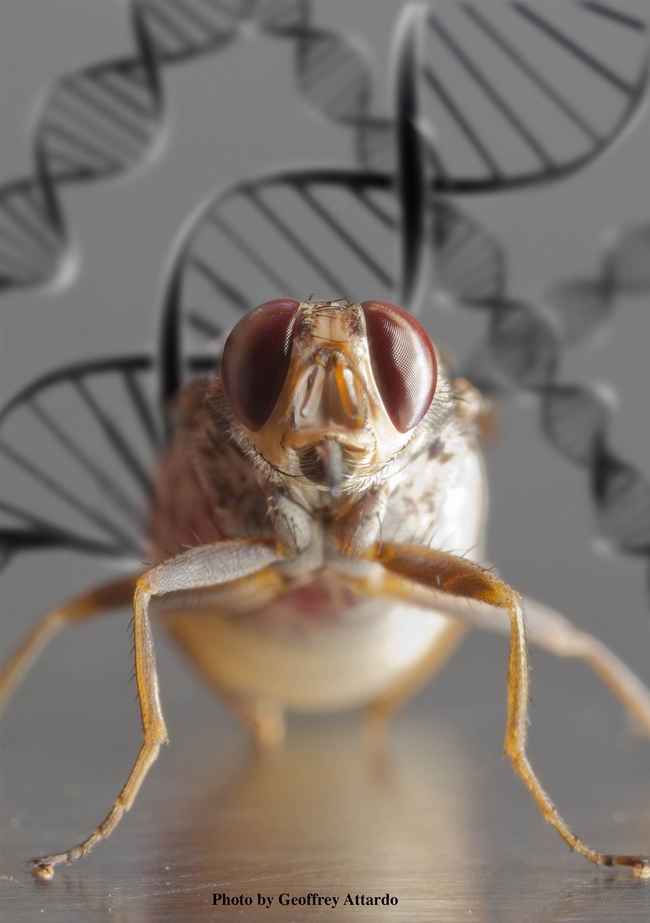
- Author: Kathy Keatley Garvey

The blood-sucking insect, which transmits the parasite that causes human and animal trypanosomiasis, has wreaked havoc in African countries.
It's distinguished from other Diptera by unique adaptations, "including lactation and the birthing of live young," says medical entomologist-geneticist Geoffrey Attardo, assistant professor, UC Davis Department of Entomology and Nematology.
Mark your calendar.
The UC Davis Department of Animal Science is hosting his seminar, “Tsetse Fly Reproduction: Exploration of the Unique Reproductive Adaptations of a Neglected Disease Vector” at 12:10 p.m., Monday, Oct. 7 in the Weir Room, 2154 Meyer Hall.
"Tsetse flies function as the sole vectors of human and animal Trypanosomiasis in sub-Saharan Africa," Attardo says in his abstract. "In addition to their role as disease vectors, tsetse flies distinguish themselves from other flies in terms of their amazing physiological adaptations. Of these adaptations, the reproductive biology/physiology of these flies stands out as one of the most dramatic."
"Female tsetse flies carry their young in an adapted uterus for the entirety of their immature development and provide their complete nutritional requirements via the synthesis and secretion of a milk like substance. Tsetse milk is derived of roughly 50 percent lipids and 50 percent proteins. Tsetse milk proteins are coded for by repurposed genes and by genes specific to tsetse flies. These genes are regulated in tight correlation with the female's pregnancy cycle. In addition, tsetse flies have established an obligate relationship with the bacterial symbiont Wigglesworthia glossinidius. This symbiont is required for lactation and larval development. Metabolic analysis of tsetse flies lacking this symbiont reveals a tightly integrated relationship between these organisms. This relationship is required for the metabolism of blood, production of essential micronutrients and synthesis/secretion of lipids essential for milk production.”
Attardo led landmark research published Sept. 2 in the journal Genome Biology that provides new insight into the genomics of the tsetse fly. The researchers compared and analyzed the genomes of six species of tsetse flies. Their research could lead to better insights into disease prevention and control.
“It was a behemoth project, spanning six to seven years,” said Attardo. “This project represents the combined efforts of a consortium of 56 researchers throughout the United States, Europe, Africa and China.” (See news story.)
In 1995, the World Health Organization (WHO) estimated that 60 million people were at risk of sleeping sickness, with an estimated 300,000 new cases per year in Africa, and fewer than 30,000 cases diagnosed and treated. Due to increased control, only 3796 cases were reported in 2014, with less than 15,000 estimated cases, according to WHO statistics.
WHO says that the parasitic disease “mostly affects poor populations living in remote rural areas of Africa. Untreated, it is usually fatal. Travelers also risk becoming infected if they venture through regions where the insect is common. Generally, the disease is not found in urban areas, although cases have been reported in suburban areas of big cities in some disease endemic countries.”
